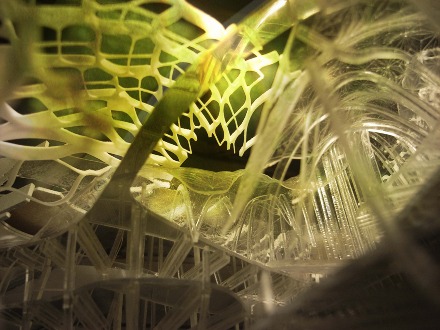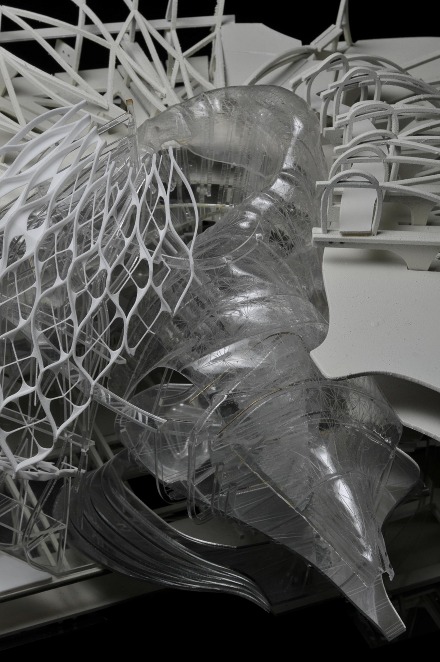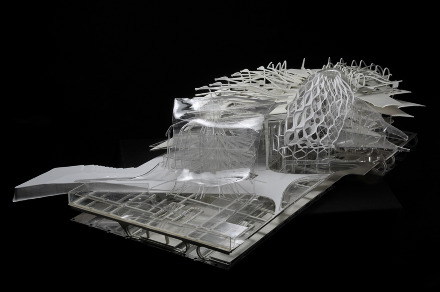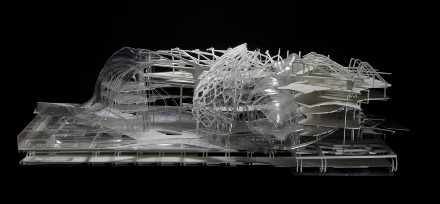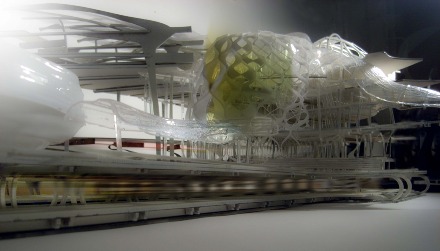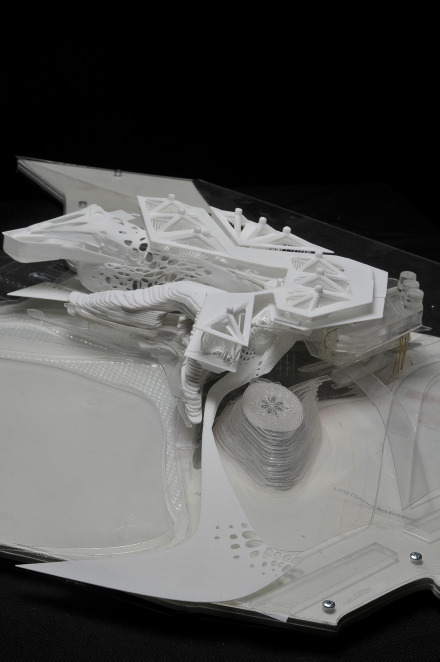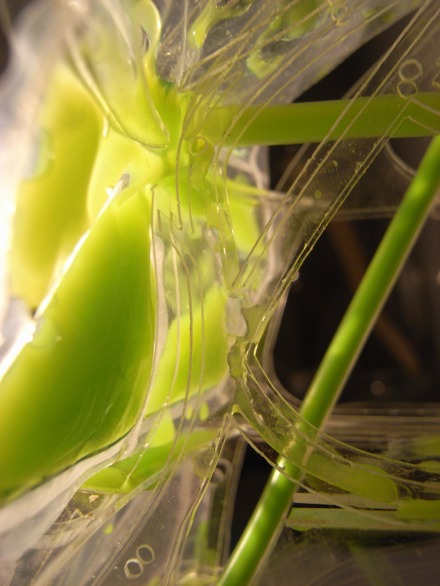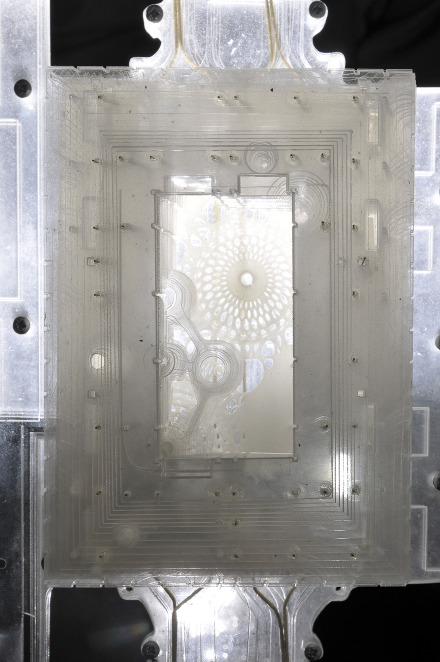When we look at today’s efficient and leading “green” design’s we don’t necessarily understand, why they are eco-friendly and efficient. Wendy Teo’s project explores the redesign of Taipei Main Station, which experiences high levels of pollution and acts as an urban heat island. The exoskeleton design explores the use and integrated design of thermometric energy and bio-reactors into the skin of the building. The building itself has an ephemeral experience, where the building shows the user it is working and living machine. Check it out after the jump!
STUDENT: Wendy Teo
SCHOOL: Bartlett School of Architecture
PROFESSORS: Marjan Colletti
YEAR: 2011
“This design is based on an observation that modern urban infrastructural systems, which efficiently transfer waste, heat, energy, water and other essential resources through the metropolis, have reduced awareness in the general public about how such systems operate. By extension, this misunderstanding of infrastructural effect does not help in highlighting the larger environmental cost of our efficient modern legacy. Here, this issue is considered with regard to Taipei Main Station – a site of intensive use and one that currently experiences high levels of air pollution and significant heat, which creates an urban heat island.
The design speculates on the potential of researching other possible energy systems that could generate power for the train station. The ambition is to integrate the flow of energy and waste matter of these new systems, such as thermometric energy and bio-reactors with the built environment. It is intended that the flow of these new energy systems would be physically expressed in an ephemeral way, with a fluctuating presence that reflected the climatic and energetic changes of the station.
The design project suggests that if we can achieve this level of energy production and integration, there is the possibility to use the flows as a transitory architectural matter that would alleviate the environmental deficit and would explicitly express the ‘cost’ of energy creation by expressing the by-products.”
Well worth checking out the rest of Wendy’s work at her personal website!
All images and text via: http://wendyteo.com/

